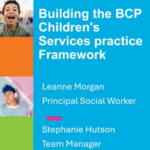The Children and Family Court Advisory and Support Service faces severe financial difficulties in London, in part because of a sharp rise in demand for public law cases.
According to Cafcass performance figures, these rose by 19.9 per cent from April 2005 to February 2006, almost double the rise of the next highest region.
However, when applications for care orders are taken alone, ignoring adoption applications, London had the third highest increase (12.1 per cent), behind the South (18.7 per cent) and South East (13.5 per cent).
These three, along with the East Midlands (11.5 per cent), were ahead of the six other regions, five of which saw a fall in care orders over the period, with the West Midlands experiencing a 6.4 per cent drop. Overall, applications rose by 3.9 per cent.
Cafcass chief executive Anthony Douglas says the differences reflect the interplay of local factors.
He says extra resources for councils, through increased recruitment, tend to lead to a rise in cases, while councils may also react to inspections by increasing care applications, for instance if their eligibility thresholds are criticised as being too high.
Andrew Webb, co-chair of the Association of Directors of Social Services’ children and families committee, says there are “almost certainly” variations in the thresholds for intervention at different councils.
“It will be linked to the availability of staff, of resources, and the extent to which local culture in children’s services is prepared or not prepared to find ways to manage risk,” he says. Webb says that the introduction of new national processes, such as the common assessment framework, could lead to more consistent practice across the country. But he adds that the “significantly greater social needs” of some areas means there will always be variations.
Andy Ferguson, assistant director of operations at Hammersmith and Fulham children’s trust, suggests the comparatively high increase in London reflects changes in practice at councils and other agencies.
Among councils, this includes a more rigorous assessment process. For instance, he says, if a woman who has had two children taken into care becomes pregnant, she will now face a more thorough assessment than before. He says the police have developed a better understanding of the impact of domestic violence on children, moving from referring cases to social services after three or four incidents to doing so automatically when children are involved.
Ferguson says: “For some councils that might mean they are getting cases they weren’t getting before.” He cites an improvement in the detection of substance misuse among parents, which he claims accounts for one-third of care cases.
Douglas says alcohol misuse is a factor behind the national increase in 2005-6, part of an upward trend in care applications, which rose by 5 per cent in 2004-5. He also says there are more cases of neglect, particularly among babies “who had [previously] almost disappeared from the care system”. He adds: “There has been a tightening up of practice and a post-Climbi factor.”
But Baaf Adoption and Fostering interim chief executive Barbara Hutchinson warns against reading too much into the figures. She says percentage increases would be amplified if the initial figure was relatively small. And as the figures are regional, they could be skewed by a changes in one large authority.
She suggests the number of care proceedings in an area could be influenced by a local case that has raised particular concerns, such as if a child was not taken into care and subsequently injured.
Douglas says consistency in care proceedings must be improved, not just across Cafcass’s services but across the UK’s children’s services.
But while variation remains across the country, Douglas suggests the most successful authorities are those that foster political, managerial and practitioner stability, strong leadership and a high political priority for looked-after children.



 Bournemouth, Christchurch and Poole
Bournemouth, Christchurch and Poole  Hampshire County Council
Hampshire County Council  Oxfordshire County Council
Oxfordshire County Council  South Gloucestershire Council
South Gloucestershire Council  Wokingham Borough Council
Wokingham Borough Council  Harnessing social work values to shape your career pathway
Harnessing social work values to shape your career pathway  Webinar: building a practice framework with the influence of practitioner voice
Webinar: building a practice framework with the influence of practitioner voice  ‘They don’t have to retell their story’: building long-lasting relationships with children and young people
‘They don’t have to retell their story’: building long-lasting relationships with children and young people  Podcast: returning to social work after becoming a first-time parent
Podcast: returning to social work after becoming a first-time parent  Workforce Insights – showcasing a selection of the sector’s top recruiters
Workforce Insights – showcasing a selection of the sector’s top recruiters  Free CPD on Parkinson’s for health and social care staff
Free CPD on Parkinson’s for health and social care staff 

 Facebook
Facebook X
X LinkedIn
LinkedIn Instagram
Instagram
Comments are closed.